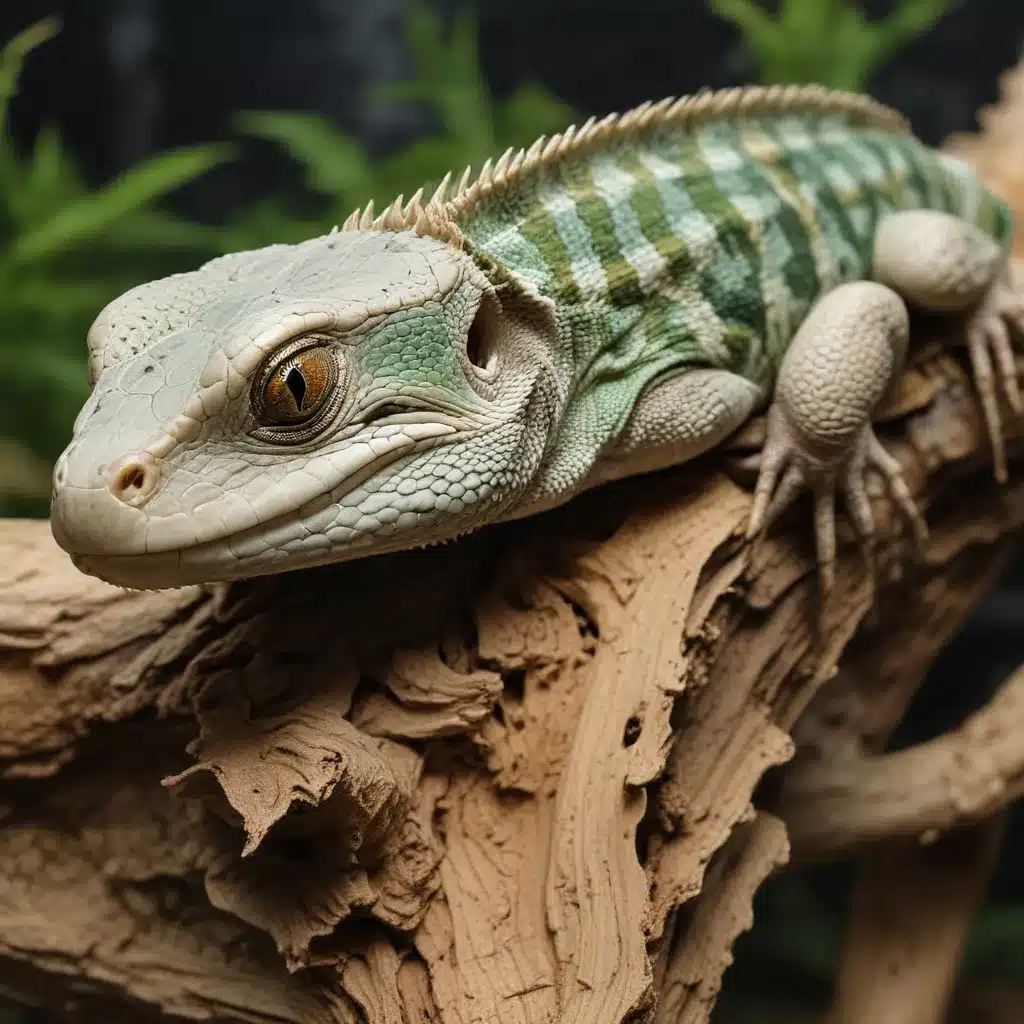
The Importance of Naturalistic Habitats
Providing the appropriate living environment is crucial for the health and well-being of captive reptiles. While minimalistic or simplistic enclosures may be the norm in the pet trade, these setups often fall short of meeting the comprehensive needs of exotic animals. To ensure the long-term thriving of your reptile companions, it is essential to go beyond the bare essentials and create naturalistic habitats that replicate their natural environments as closely as possible.
Naturalistic enclosures not only offer aesthetic appeal but also provide numerous benefits for your reptile’s physical and mental well-being. By incorporating elements found in their natural habitats, such as vegetation, substrate, and hiding spots, you can stimulate their natural behaviors and encourage them to exhibit their full range of instinctual activities. This, in turn, can lead to reduced stress, improved health, and a more enriched quality of life for your captive reptiles.
Designing the Ideal Reptile Habitat
When it comes to creating a naturalistic habitat for your reptiles, the key is to focus on replicating the essential elements found in their natural environments. This includes considerations for the enclosure size, substrate, temperature and humidity, lighting, and the inclusion of appropriate decor and vegetation.
Enclosure Size and Dimensions
The size of the enclosure is a critical factor in ensuring your reptile’s physical and mental well-being. As a general guideline, the enclosure should provide at least one square foot of floor space for every foot of the reptile’s length. This allows the animal to move freely, exercise, and exhibit natural behaviors without feeling confined.
For larger reptile species, such as monitors or pythons, you may need to consider custom-built enclosures or even dedicated rooms to provide the necessary space. These expansive habitats not only accommodate the animal’s physical needs but also offer the opportunity to create a truly immersive and naturalistic environment.
Substrate Selection
The substrate, or bedding material, plays a vital role in maintaining the appropriate humidity and allowing for natural burrowing and exploration. Avoid using substrates that may pose a risk of impaction, such as loose substrates that can be accidentally ingested. Instead, opt for naturalistic options like cypress mulch, coconut fiber, or a mixture of soil and organic materials.
When selecting the substrate, consider the specific needs of your reptile species. Some may thrive in a bioactive substrate, which introduces beneficial microorganisms and cleaners to help maintain a healthy, self-sustaining environment.
Temperature and Humidity Control
Reptiles are ectothermic, meaning they rely on their environment to regulate their body temperature. Maintaining the correct temperature gradient and humidity levels within the enclosure is critical for their health and proper physiological functioning.
Carefully research the specific temperature and humidity requirements for your reptile species, and use a combination of heat sources, such as basking lamps, ceramic heaters, or under-tank heating, to create the necessary thermal gradient. Supplement this with hygrometers to monitor and adjust the humidity levels as needed.
Lighting Considerations
Appropriate lighting is essential for reptiles, as they require specific wavelengths of light for various biological processes, such as vitamin D3 synthesis and UV-B absorption. Incorporate a combination of full-spectrum lighting and specialized reptile lamps to mimic the natural lighting conditions found in their native habitats.
Be mindful of the lighting schedule, as reptiles benefit from a consistent day-night cycle to maintain their natural circadian rhythms. Gradually transitioning the lighting throughout the day can help recreate the natural progression of sunrise and sunset.
Naturalistic Decor and Vegetation
To create a truly immersive and enriching habitat, incorporate naturalistic elements such as branches, rocks, logs, and live or artificial plants. These features not only enhance the visual appeal of the enclosure but also provide crucial hiding spots, basking areas, and opportunities for climbing and exploration.
When selecting decor and vegetation, ensure that they are safe for your reptile species and do not pose any risk of injury or ingestion. Research the specific plant and material requirements for your reptile to ensure a harmonious and thriving environment.
Bridging the Gap: Captive Breeding and Conservation
The captive breeding of exotic reptiles has played a crucial role in both ensuring the survival of threatened species and reducing the demand for wild-caught specimens. Responsible breeders have made significant strides in developing captive populations, introducing new color morphs, and providing a sustainable source of pets for enthusiasts.
However, the sale and ownership of exotic reptiles are often subject to legal regulations and licensing requirements. It is essential for both breeders and buyers to familiarize themselves with the applicable laws and guidelines in their respective regions to ensure compliance.
Responsible breeders should prioritize the health and well-being of their reptiles, focusing on providing high-quality care, proper nutrition, and suitable housing. They should also be transparent about the breeding process and the genetic lineage of their animals, allowing buyers to make informed decisions.
Prospective reptile owners, on the other hand, should thoroughly research the specific care requirements of the species they are interested in and ensure they have the necessary resources, knowledge, and commitment to provide a lifetime of excellent care.
Conclusion
Creating naturalistic habitats for captive reptiles is not only a visually appealing endeavor but also a fundamental aspect of responsible pet ownership. By replicating the essential elements of their natural environments, you can ensure the long-term health, well-being, and thriving of your exotic reptile companions.
Through a combination of careful habitat design, proper husbandry practices, and a commitment to legal compliance, reptile enthusiasts can play a vital role in bridging the gap between captive care and conservation. By prioritizing the needs of these remarkable creatures, we can foster a deeper appreciation for the diversity and beauty of the reptile world.
Explore the possibilities of naturalistic reptile habitats and discover the joy of providing your exotic pets with the best possible living conditions. Visit ExoticReptilesSale.com for a wide range of resources and information to support your journey in reptile ownership.

